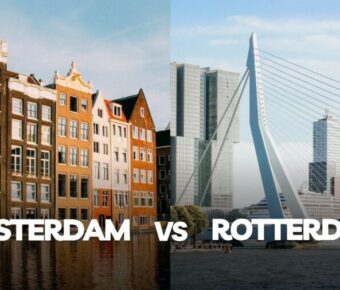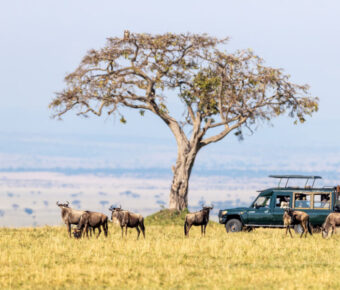
Bled vs Kitzbühel: 7 Key Differences Between These Stunning Alpine Destinations in 2025
Nestled in the heart of the Alps, Bled and Kitzbühel offer two distinct yet equally captivating mountain experiences. Bled, Slovenia’s jewel, features a stunning lake with an island church and clifftop castle, creating a fairy-tale setting. Meanwhile, Austria’s Kitzbühel combines world-class skiing with charming medieval architecture painted in vibrant colors.
While both destinations showcase Alpine beauty, they cater to different travel preferences – Bled offers more affordable lakeside relaxation with Slovenian culture. At the same time, Kitzbühel provides upscale Austrian mountain experiences with premium winter sports facilities.
These European gems are actually close enough to combine in one trip. Many travelers drive between Lake Bled and Kitzbühel in about 2.5 hours, making for a perfect multi-center holiday. The journey offers stunning mountain scenery, regardless of whether you take the A10 motorway or the more scenic B108 route through the heart of the Alps.
Contents
- Geographic and Cultural Insights
- Location and Accessibility
- Historical Significance
- Seasonal Activities and Attractions
- Winter Sports Opportunities
- Summer Tourism Highlights
- Accommodation and Hospitality
- Luxury Resorts and Hotels
- Local Lodging and B&Bs
- Skiing Culture and World Cup Competitions
- High-Profile Ski Events
- Athlete Profiles
- Local Cuisine and Gastronomy
- Traditional Dishes and Delicacies
- Culinary Experiences and Tastings
- Adventure and Recreation
- Outdoor Adventures Beyond Skiing
- Family-Friendly Activities
- Safety and Risks in Alpine Sports
- Skiing Safety Measures
- Understanding Mountain Risks
- Economic Impact and Tourism
- Tourism Revenue and Local Economy
- Infrastructure Development
- Personal Stories and Testimonials
- Athletes’ Experiences
- Traveler Narratives
- Media and Resources
- Photography and Videos
- Guidebooks and Articles
- Frequently Asked Questions
- What unique attractions do Kitzbühel and Bled offer to travelers outside of skiing?
- How do the ski school offerings for beginners compare to those of Bled and Kitzbühel?
- Which resort is better suited for luxury accommodations, Bled or Kitzbühel?
- Can you detail the differences in the après-ski culture and activities in Bled and Kitzbühel?
- What are the most challenging ski runs for expert skiers in Bled and Kitzbühel?
- How does the overall cost of a ski holiday differ when choosing between Bled and Kitzbühel?
- More Travel Guides
Geographic and Cultural Insights
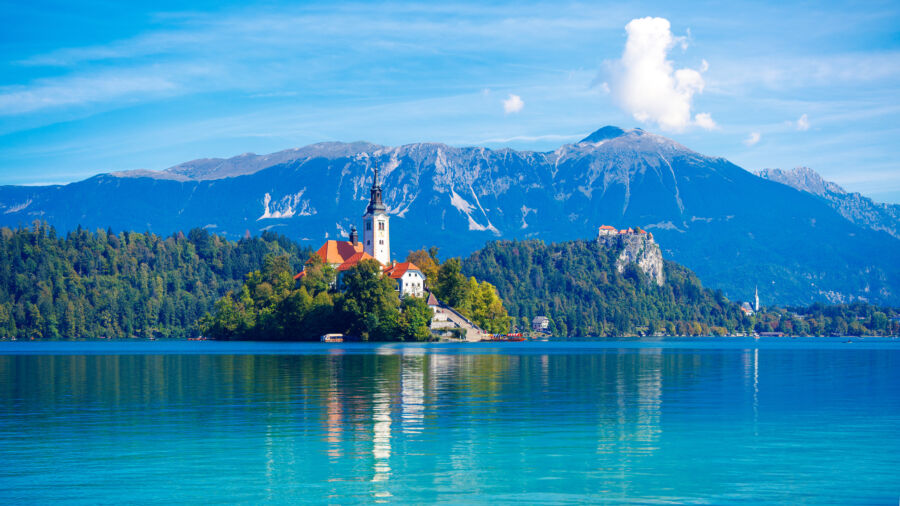
Bled and Kitzbühel offer distinctive Alpine experiences with unique geographic settings and cultural heritage. These two destinations showcase the best of Slovenian and Austrian mountain culture, respectively.
Location and Accessibility

Bled is nestled in northwestern Slovenia, surrounded by the Julian Alps. This picturesque lake town sits at an elevation of about 500 meters. Getting to Bled is fairly straightforward – it’s only about 35 km from Ljubljana Airport, making it accessible for international travelers.
Kitzbühel, on the other hand, is situated in the Tyrolean Alps of western Austria between Innsbruck and Salzburg. At an elevation of approximately 800 meters, this resort town enjoys a prime position in the Austrian Alps. Visitors can reach Kitzbühel via airports in Innsbruck (about 95 km away) or Salzburg (80 km).
Both destinations are well-connected by rail and road networks. Bled benefits from Slovenia’s compact size, making day trips to other Slovenian attractions quite feasible. Meanwhile, Kitzbühel’s central European location makes it a convenient stop touring multiple Alpine countries.
Historical Significance
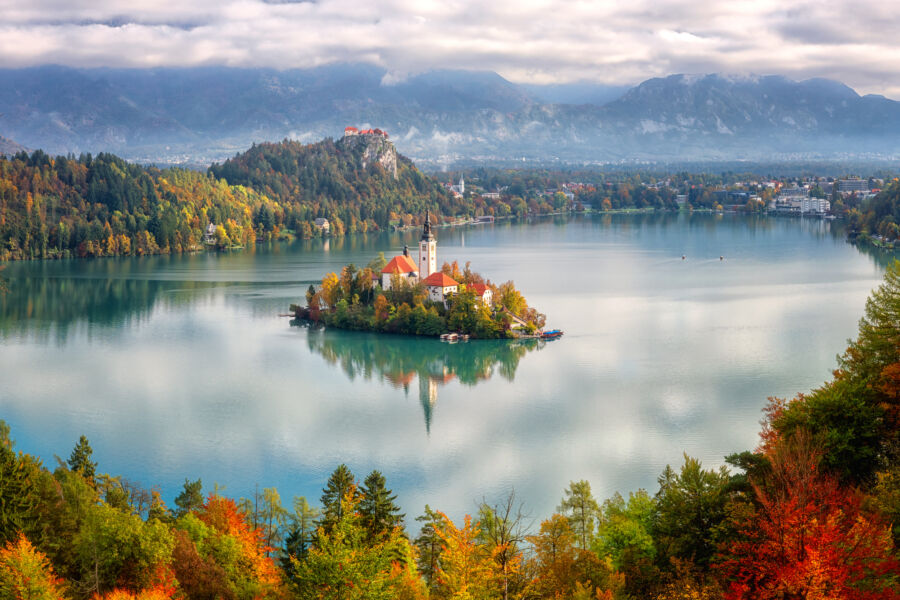
Bled’s history dates back to 1004, when it was first mentioned in written records. The iconic Bled Castle, perched on a cliff above the lake, has stood watch since medieval times. In the 19th century, the region became a popular retreat for European aristocracy, with notable visitors including Austro-Hungarian royalty.
Kitzbühel boasts an even longer documented history, with its origins as a mining town dating back to the 12th century. The charming medieval town center still showcases colorful buildings from this era. Kitzbühel transformed into a winter sports mecca in the early 20th century and has hosted the famous Hahnenkamm races since 1931.
Both destinations have preserved their historical architecture while embracing tourism. Bled’s island church and Kitzbühel’s winding cobblestone streets tell stories of centuries past, offering visitors a glimpse into authentic European Alpine heritage.
Seasonal Activities and Attractions
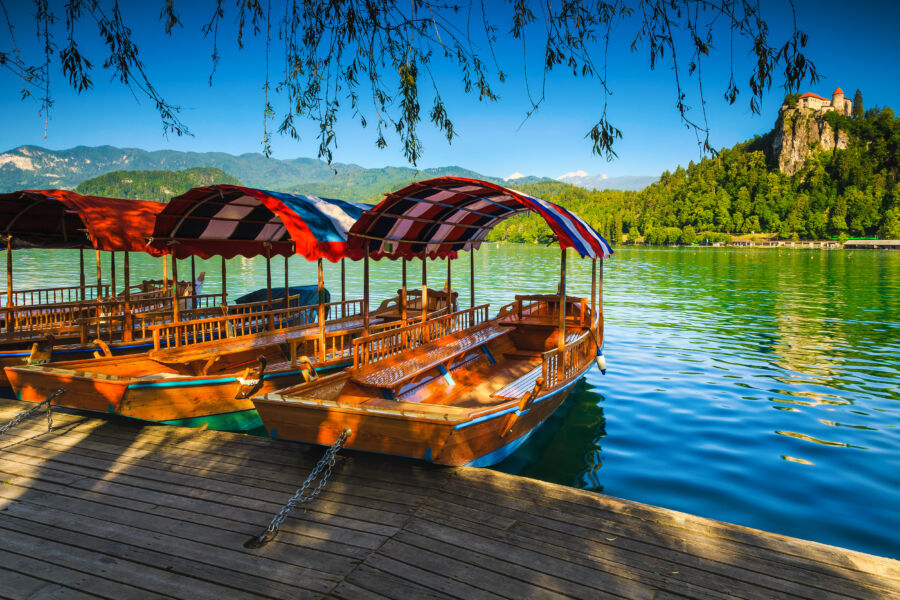
Bled and Kitzbühel transform dramatically with the changing seasons, offering unique experiences year-round. These Alpine destinations shine with distinctive seasonal activities that cater to different traveler preferences.
Winter Sports Opportunities
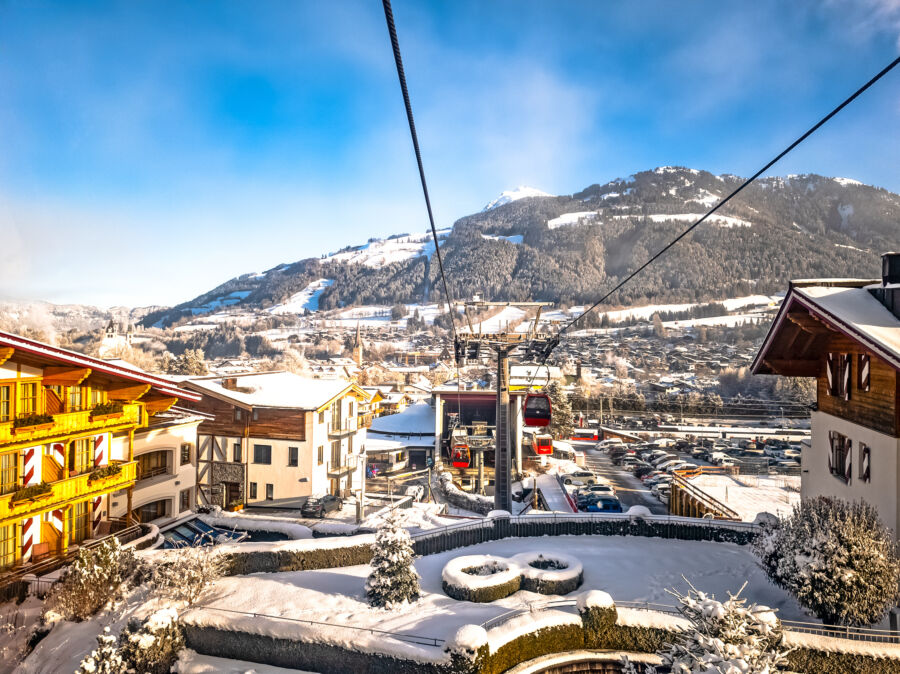
Kitzbühel is legendary in winter sports, boasting one of the most challenging downhill ski courses – the infamous Streif. The Kitzbühel/Kirchberg ski resort offers extensive terrain with passes for 6+ days, including free evening rides. Advanced skiers flock here for the technical runs, while beginners can enjoy gentler slopes and excellent ski schools.
Bled’s winter scene is more subdued but charming. While not as famous for downhill skiing as Kitzbühel, Bled is a gateway to nearby ski areas. The frozen lake sometimes becomes a natural ice skating rink in the coldest months.
Both destinations offer cross-country skiing trails, winter hiking paths, and cozy après-ski experiences. Kitzbühel definitely takes the crown for serious winter sports enthusiasts, while Bled provides a more relaxed winter wonderland experience.
Summer Tourism Highlights
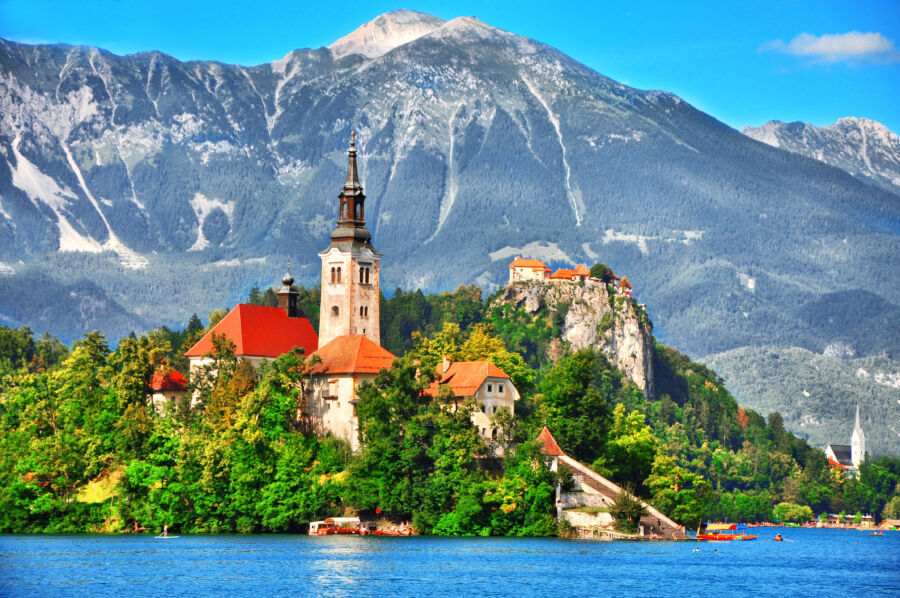
Lake Bled truly comes alive in summer. The emerald waters become the center of activity with swimming, rowing, and stand-up paddleboarding opportunities. Walking the full loop around Lake Bled offers spectacular views from different angles.
The Straža Hill summer roller-coaster for adventure seekers provides an exhilarating ride with panoramic views. Don’t miss hiking to the Ojstrica viewpoint for that classic postcard shot of the lake. A traditional pletna boat to Bled Island and visiting Bled Castle are must-do activities.
Kitzbühel transforms into a hiking and mountain biking paradise in summer. The same mountains that challenge skiers in winter offer miles of scenic trails and beautiful Alpine meadows. The charming town center buzzes with outdoor cafés and cultural events.
The best time to visit Bled is late spring (May-June) or early autumn (September-October), when crowds thin and the weather remains pleasant.
Accommodation and Hospitality
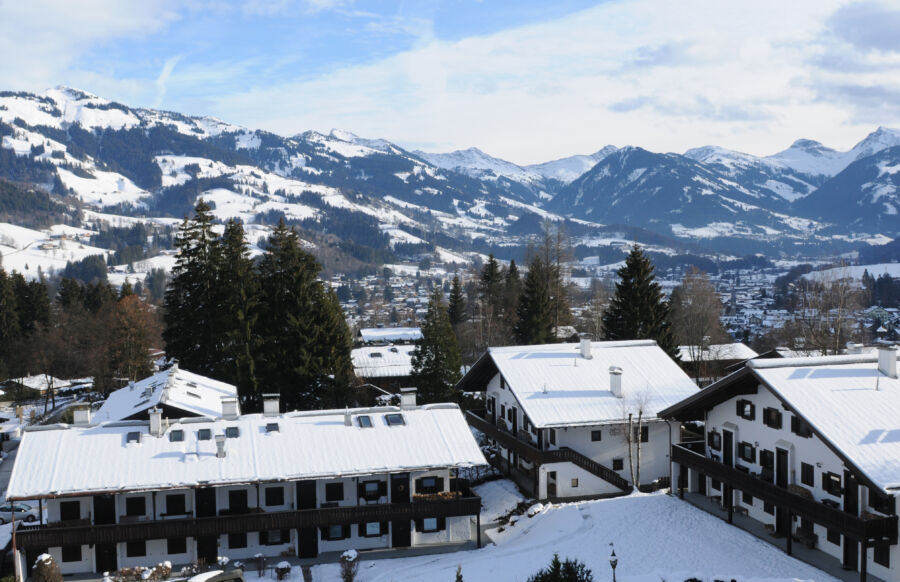
Bled and Kitzbühel offer diverse lodging options catering to different preferences and budgets. The hospitality in these destinations reflects their unique cultural atmospheres while providing comfortable bases for exploring their natural beauty.
Luxury Resorts and Hotels

Kitzbühel truly shines when it comes to upscale accommodations. This Austrian resort town is known for its ritzy atmosphere and luxurious lodging options. Many hotels in Kitzbühel feature elegant Alpine designs, modern amenities, and wellness facilities.
The Sporthotel Reisch stands out with its comfortable rooms and friendly atmosphere, making it perfect for families and groups. Most luxury properties in Kitzbühel offer spectacular mountain views, gourmet dining, and spa services.
Bled’s luxury scene is more intimate but equally impressive. Lakeside hotels provide stunning views of the island church and castle. Several properties offer balconies or terraces that look directly onto the emerald waters.
Many upscale accommodations in both destinations provide special seasonal packages, with winter ski storage in Kitzbühel and summer water activities in Bled.
Local Lodging and B&Bs
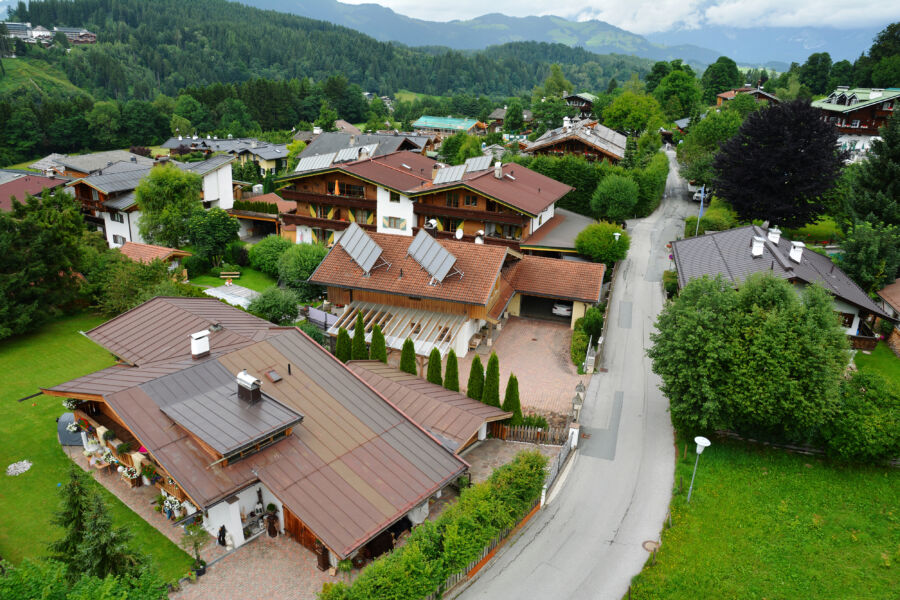
Both destinations offer charming, smaller accommodations for travelers seeking authentic experiences. Bled’s family-run guesthouses and B&Bs provide warm Slovenian hospitality at reasonable prices. Many include homemade breakfasts featuring local specialties.
Farm stays around Bled let visitors experience rural Slovenian life close to the main attractions. These properties often have gardens where guests can relax after exploring.
Kitzbühel’s local lodging includes traditional Austrian guesthouses with wooden furnishings and cozy atmospheres. Many accommodation options in both towns offer special seasonal rates, with lower prices during shoulder seasons.
Budget-conscious travelers will find more affordable options in Bled, while Kitzbühel tends to command premium prices even for simpler accommodations. Booking is recommended for both destinations, especially during peak winter (Kitzbühel) and summer (Bled) seasons.
Skiing Culture and World Cup Competitions

Bled and Kitzbühel boast impressive skiing cultures but differ greatly in their prominence on the world stage. Kitzbühel has earned legendary status in skiing, while Bled offers a more laid-back skiing experience.
High-Profile Ski Events
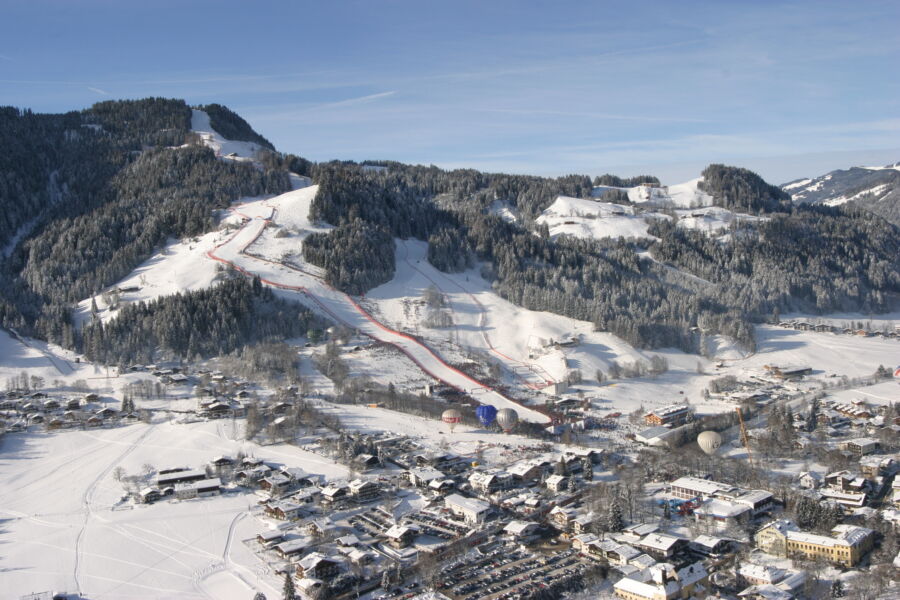
Kitzbühel stands tall as home to the notorious Hahnenkamm Race, widely considered the most dangerous ski race in the world. This prestigious event has challenged elite skiers since 1931, with only a brief pause during World War II. The infamous Streif downhill course strikes fear into even the most experienced racers.
The 2025 Kitzbühel Alpine Ski World Cup Slalom is scheduled for January 26th at the challenging Ganslernhang slope. This marks the 85th edition of the Hahnenkamm Races, showing the deep tradition embedded in Kitzbühel’s skiing culture.
Safety concerns remain paramount at these events. Recent competitions have seen serious accidents, including head injuries requiring surgery. The high-risk level makes victories here especially meaningful in the skiing world.
While beautiful, Bled doesn’t host World Cup competitions of this caliber. It offers more accessible slopes suited for recreational skiers rather than professional racers.
Athlete Profiles

The Hahnenkamm Race in Kitzbühel attracts the absolute elite of the skiing world. Champions who conquer the Streif gain legendary status among fans and fellow competitors.
Winning in Kitzbühel can define a skier’s career. The technical difficulty of the downhill and slalom courses means only the most skilled athletes succeed here. The Super-G event tests racers’ ability to combine speed with technical precision.
Many top skiers approach Kitzbühel with a mix of respect and fear. Veterans often mentor younger racers in tackling the course’s most treacherous sections. Some athletes skip competing here, considering the injury risk is too high.
Bled’s skiing scene features more casual athletes and families. Without the pressure of World Cup events, skiers in Bled can focus on enjoyment rather than competition.
See Related: Best Travel Backpacks for Europe: Ultimate Guide to Comfort and Style
Local Cuisine and Gastronomy

Both Bled and Kitzbühel offer incredible culinary experiences that showcase their regional specialties. The food scenes in these Alpine destinations blend traditional cooking methods with local ingredients, creating unforgettable dining experiences for visitors.
Traditional Dishes and Delicacies
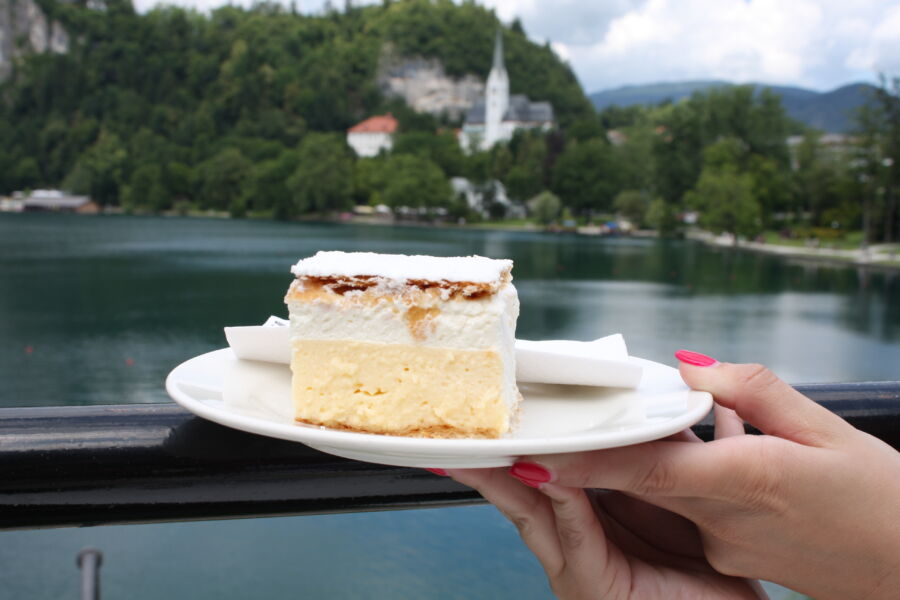
In Bled, Slovenia, the most famous delicacy is kremšnita (cream cake), a vanilla custard and cream dessert made the same way since 1953. Most visitors head to Park Restaurant or Slaščičarna Zima to try this iconic treat. Slovenian cuisine also features potica (nut roll), štruklji (rolled dumplings), and fresh lake fish like Arctic char from Lake Bled.
Kitzbühel’s Austrian fare is hearty and comforting. Tiroler Gröstl is a local favorite – a filling mixture of sliced potatoes, onions, and meat (usually beef or pork) from the Tyrol region. Visitors rave about the schnitzel and fries, with some saying they “still dream about” the meal years after visiting.
Other Austrian must-tries include:
- Kaiserschmarrn (shredded pancake with fruit compote)
- Käsespätzle (cheese noodles)
- Apple strudel
Culinary Experiences and Tastings
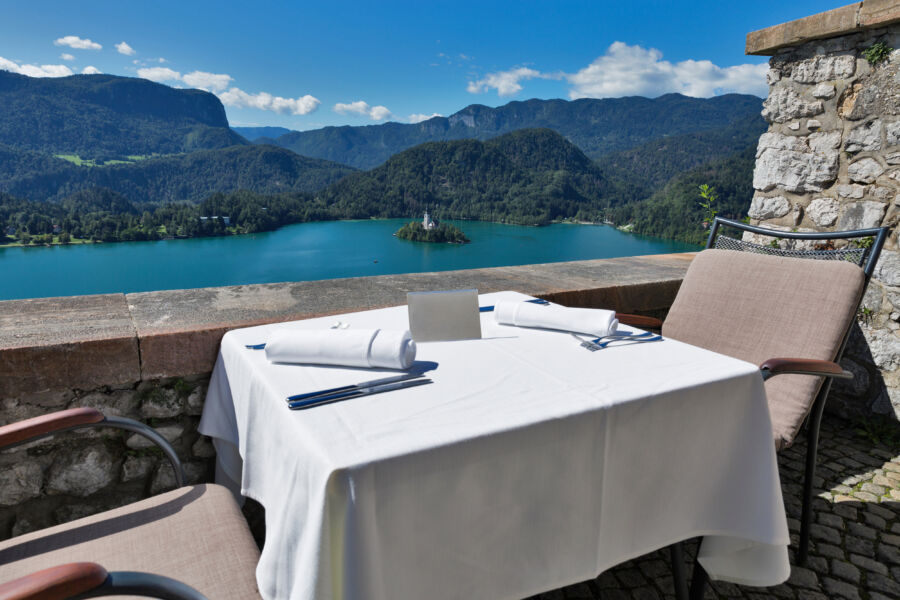
Bled offers intimate dining experiences along the lakeshore with stunning views. Many restaurants serve farm-to-table meals using ingredients from nearby villages. The Bled Castle Restaurant provides excellent food and panoramic views of the lake and surrounding Alps.
Kitzbühel presents diverse dining options ranging from rustic mountain huts to fine dining establishments. Despite its traditional Alpine setting, the town is renowned for its cosmopolitan food scene.
Both destinations feature mountain huts in winter, where skiers can enjoy warm meals between runs. Kitzbühel’s slope-side restaurants offer everything from quick bites to gourmet meals, perfect after a day on the famous Hahnenkamm.
For wine lovers, Slovenia’s growing wine reputation means Bled restaurants often feature excellent local vintages, while Kitzbühel restaurants typically offer outstanding Austrian and international wine selections.
Adventure and Recreation
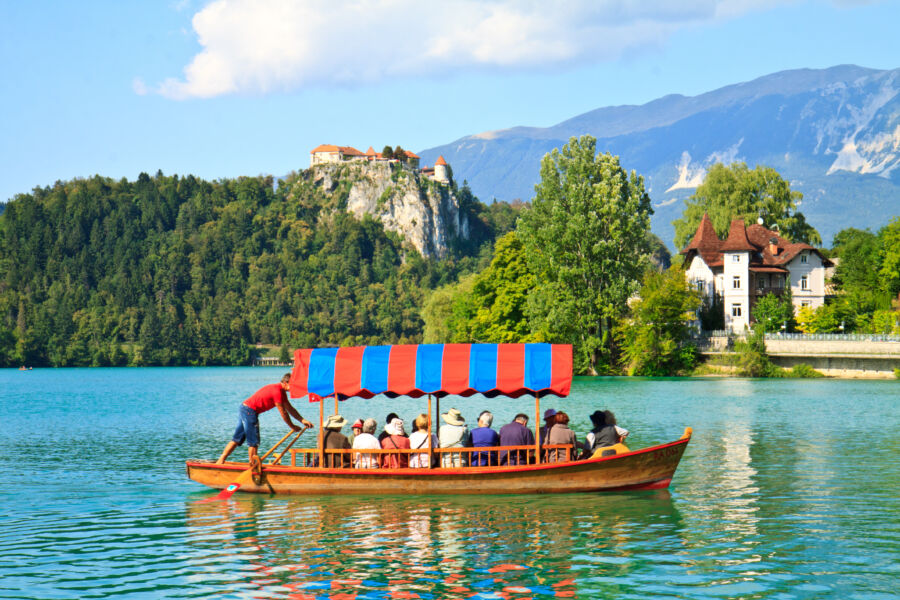
Both Bled and Kitzbühel offer amazing outdoor activities year-round. While Kitzbühel is famous for winter sports, both destinations have plenty to do regardless of the season you visit.
Outdoor Adventures Beyond Skiing

Kitzbühel shines as a winter paradise with its impressive 233km of perfectly groomed slopes and modern lift system. But there’s more to this Austrian gem than just skiing! The Alpine terrain transforms into a hiking and mountain biking haven in summer. The region offers well-marked trails for all difficulty levels.
Lake Bled provides a completely different adventure setting. The emerald waters are perfect for swimming, stand-up paddleboarding, and rowing. Many visitors rent traditional wooden boats called “pletnas” to reach Bled Island. For adrenaline seekers, nearby Vintgar Gorge offers spectacular walks along wooden pathways next to rushing waters.
Both destinations feature excellent cycling tours and guided hikes showcasing stunning mountain landscapes.
Family-Friendly Activities
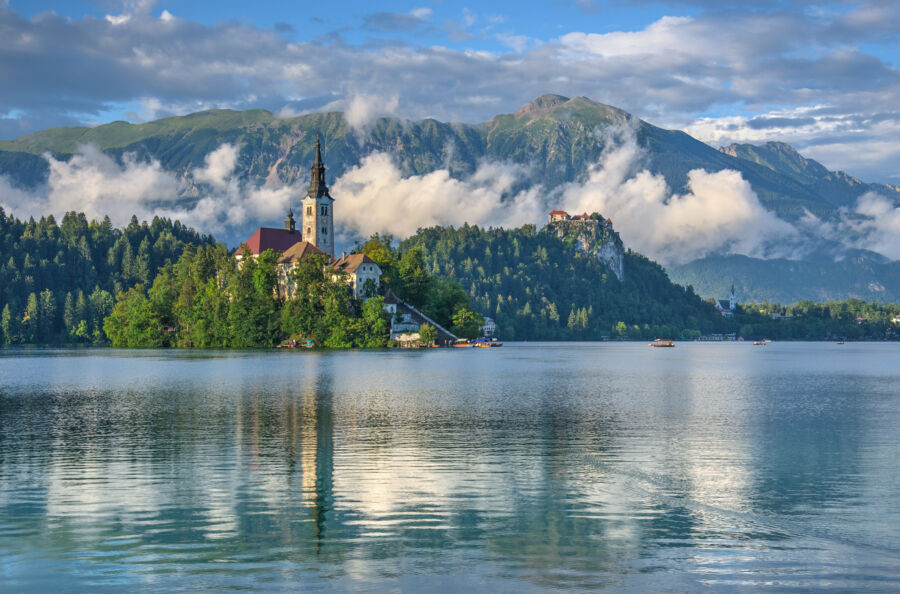
Bled’s gentle lake activities delight families. Kids love feeding the swans, enjoying ice cream walks around the lake path, and climbing to Bled Castle for amazing views. The lake’s shallow edges are safe for younger swimmers.
Kitzbühel offers family adventures beyond its famous ski slopes. Even non-skiers can enjoy the mountains with free evening cable car rides and longer ski passes. The town has several playgrounds and family-friendly hiking paths. Winter visitors can try ice skating or sledding as alternatives to skiing.
Both destinations host seasonal festivals that kids adore. In winter, Kitzbühel transforms with Christmas markets while summer brings outdoor concerts. Bled offers dragon boat festivals and swimming events. For sports enthusiasts, Kitzbühel’s ice Hockey tournaments and Bled’s rowing competitions provide exciting spectator opportunities throughout the year.
Safety and Risks in Alpine Sports
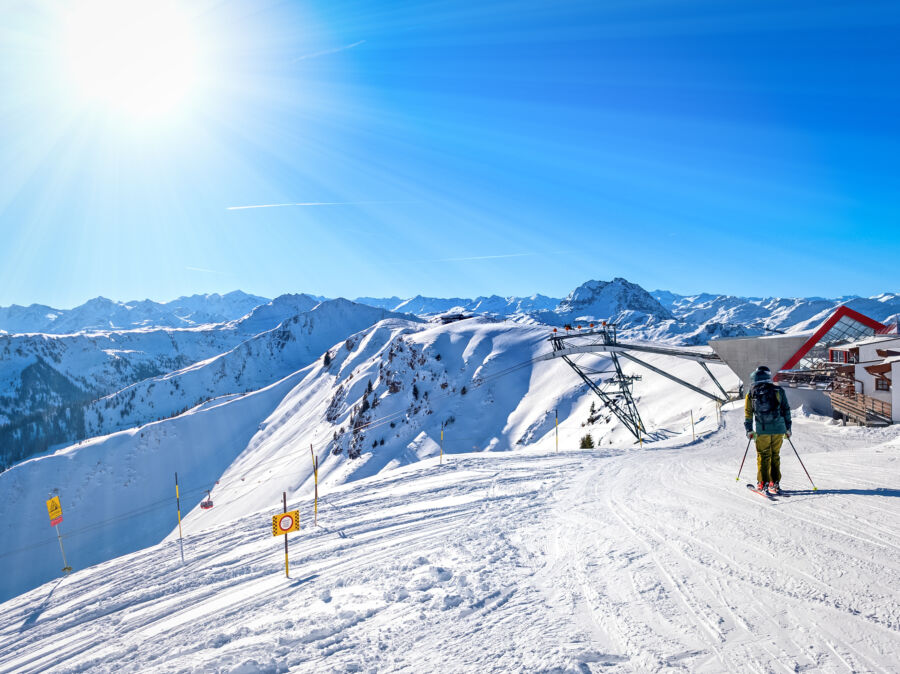
Bled and Kitzbühel offer stunning alpine experiences, but winter sports have inherent dangers that shouldn’t be overlooked. The beautiful mountain landscapes mask potential hazards that require proper preparation and awareness.
Skiing Safety Measures

Kitzbühel’s notorious Streif downhill course highlights the extreme risk management needed in alpine sports. This legendary slope has witnessed numerous horrific crashes over the years, with sliding bodies, flying skis, and helicopter evacuations becoming an unfortunate part of its history. Safety measures have evolved significantly in response to these dangers.
Modern ski resorts implement comprehensive safety protocols, including:
- Regular slope maintenance and hazard marking
- Trained ski patrol teams ready for emergency response
- Mandatory helmet policies for racing events
- Rest areas and speed-control zones in dangerous sections
After several high-profile training crashes, skiing officials have strengthened equipment requirements. Improved bindings release more reliably during falls, reducing the risk of cruciate ligament injuries that once ended careers regularly.
Understanding Mountain Risks
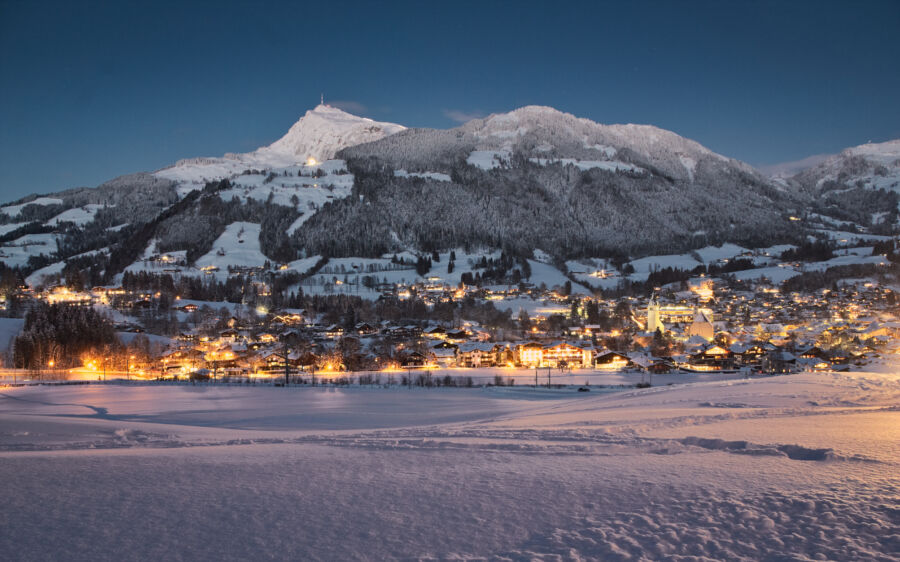
Mountain environments present unpredictable challenges beyond just steep slopes. Weather conditions can change rapidly, creating dangerous situations for unprepared visitors. Visibility can drop suddenly, transforming a pleasant ski day into a disorienting experience.
Common mountain risks include:
- Avalanche danger in backcountry areas
- Extreme temperature fluctuations
- Hidden obstacles beneath fresh snow
- Fatigue-related judgment errors
Many skiers underestimate these dangers, focusing instead on skill-based risks. However, even experienced athletes face significant hazards on challenging courses like those in Kitzbühel. The rehabilitation period following alpine sports injuries can be lengthy, with concussions and knee injuries being particularly common.
Smart risk management means respecting the mountain. This includes checking weather forecasts, skiing with partners, and knowing personal limits. Bled and Kitzbühel prioritize visitor safety, but ultimately, responsibility lies with each participant.
See Related: Architecturally Striking Boutique Hotels in Europe’s Hidden Mountain Regions
Economic Impact and Tourism

Bled and Kitzbühel have transformed from quiet mountain towns into thriving tourist destinations that significantly impact their local economies. Tourism has become the lifeblood of these regions, creating jobs and generating substantial revenue through various seasons.
Tourism Revenue and Local Economy
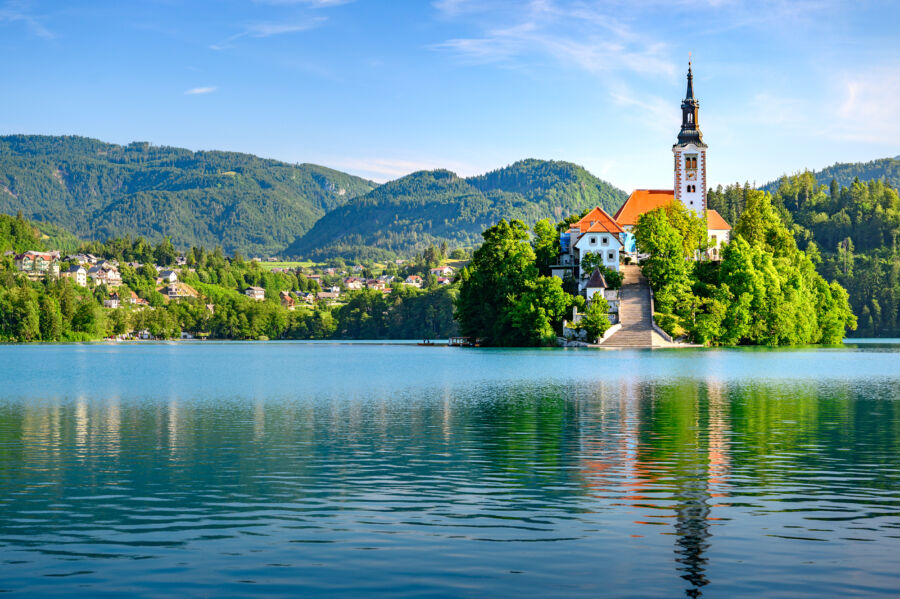
Bled’s economy has become increasingly dependent on tourism, with visitors drawn to its iconic lake and island church. The town sees a healthy mix of summer and winter tourists, though summer months bring the highest influx of visitors. Local businesses – from restaurants and cafés to souvenir shops and water activity rentals – thrive during peak seasons.
In contrast, Kitzbühel’s economy is more heavily weighted toward winter tourism. This Austrian resort town commands premium prices during ski season, with luxury hotels and high-end boutiques catering to wealthy visitors. The average spending per tourist in Kitzbühel tends to be higher than in Bled.
Both destinations have expanded their tourism calendars to include shoulder seasons. Bled hosts rowing competitions and festivals, while Kitzbühel organizes summer hiking excursions and golf tournaments to keep revenue flowing year-round.
Infrastructure Development
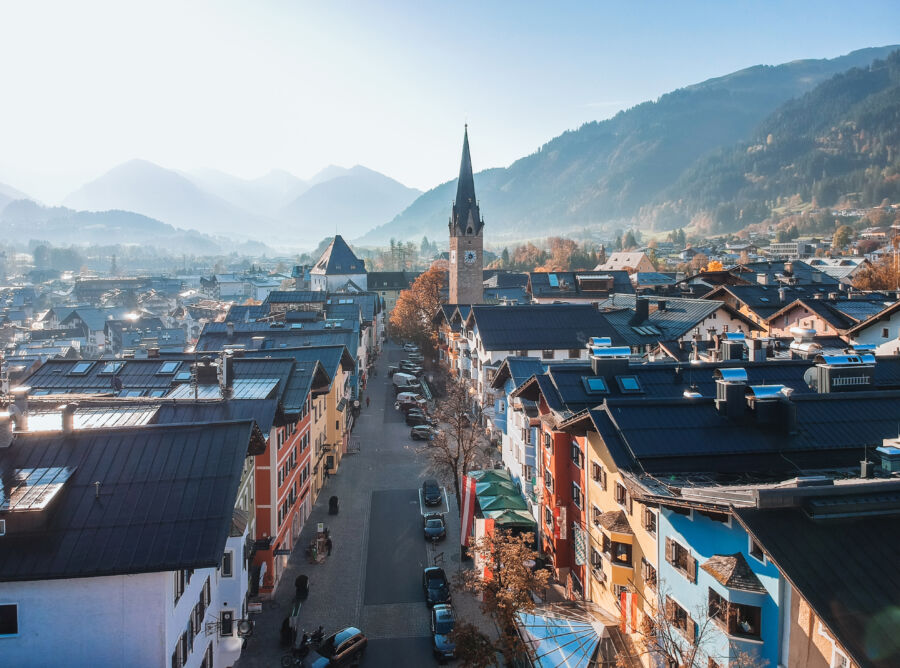
Slovenia has invested significantly in Bled’s infrastructure to accommodate growing tourism. Roads have been improved, parking has been expanded, and walking paths have been enhanced around the lake. However, this development has been somewhat restrained compared to Kitzbühel.
Kitzbühel’s infrastructure reflects Austria’s long-standing commitment to alpine tourism. The town boasts state-of-the-art ski lifts, snowmaking equipment, and mountain transportation systems. The train connections to major Austrian cities are excellent, making it easily accessible for international tourists.
Both destinations face challenges balancing development with preservation. Bled struggles with traffic congestion during peak months, while Kitzbühel must continually update its aging ski infrastructure to compete with newer resorts. Development plans in both locations increasingly emphasize sustainability to protect the natural beauty that attracts visitors.
Personal Stories and Testimonials
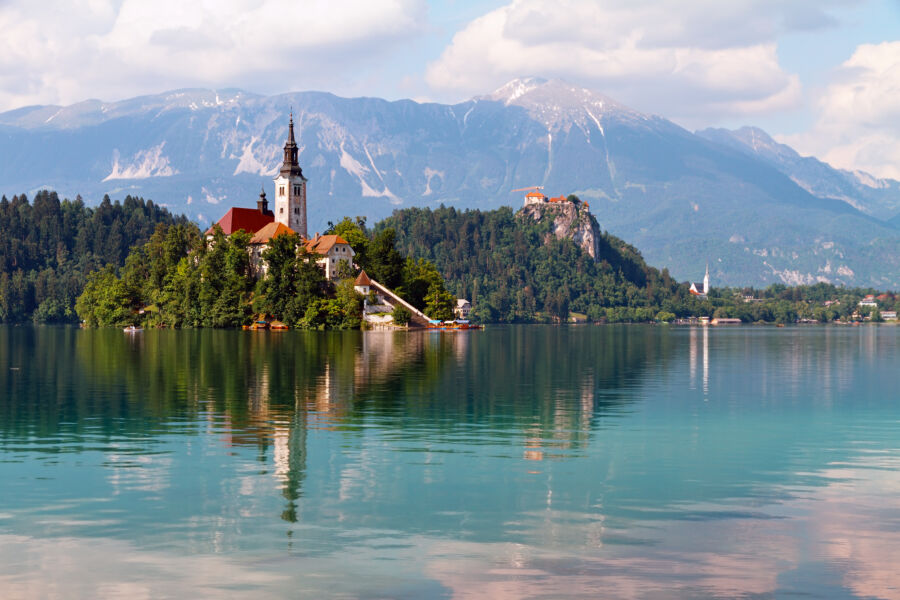
What brings both destinations to life are the personal accounts of those who have experienced them firsthand. The mountains of Kitzbühel and the serene waters of Bled have left lasting impressions on elite athletes and everyday travelers alike.
Athletes’ Experiences
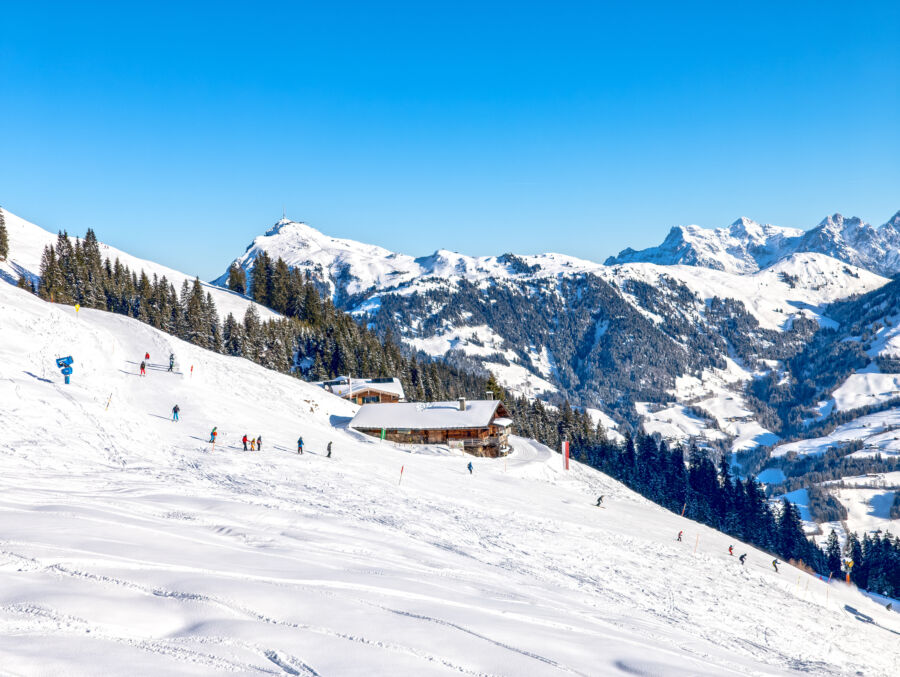
Kitzbühel holds a special place in the hearts of many winter sports athletes. Alpine skiing champion Cyprien Sarrazin recently described the Hahnenkamm downhill course as “the ultimate test of skill and courage.” After his impressive run last season, he mentioned, “There’s nothing like the rush of racing down the Streif—it’s where legends are made.”
Local ski instructor Felix Hacker has guided visitors for over 15 years. “I’ve seen people transform from nervous beginners to confident skiers in just a week here,” he says. “The varied terrain makes it perfect for learning.”
Over in Bled, Olympic rower Jacob Schramm speaks fondly of training on the lake: “The calm waters and stunning backdrop create an almost meditative training environment. It’s demanding but inspiring at the same time.”
Traveler Narratives
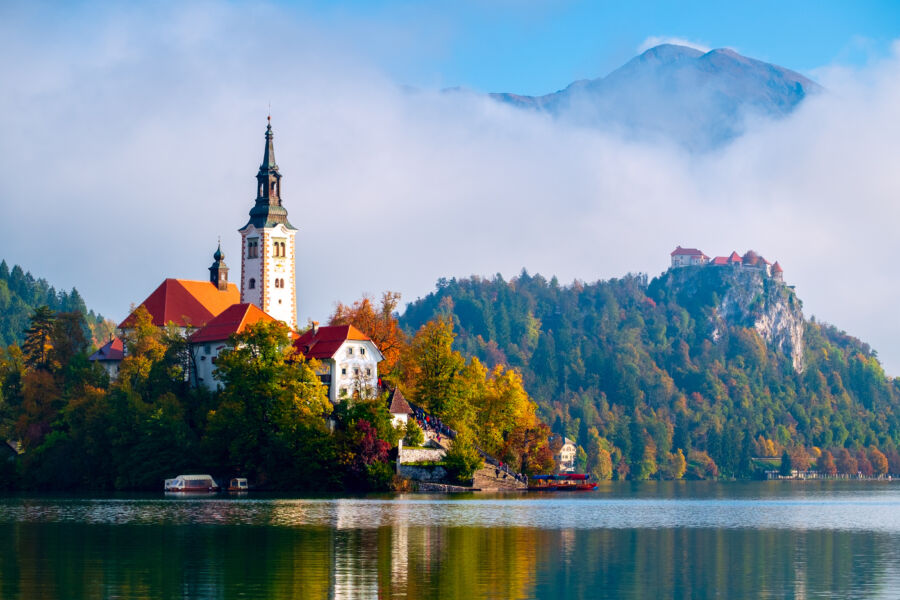
“The moment I saw Lake Bled with its island church and castle perched on the cliff, I knew this was a special place,” shares Canadian tourist Marta Jensen. She rowed to the island and rang the wishing bell, a tradition dating back centuries.
Many visitors to Kitzbühel mention the town’s unique charm. “I’d learned to love the crunching sound of skis over fresh snow,” one traveler noted, perfectly capturing the sensory experience. Another visitor described the locals’ “super” friendly attitude that made their stay memorable.
A young family from the UK wrote about how Bled surprised them: “We thought it would just be pretty views, but our kids loved swimming in the lake and hiking the nearby trails. The cream cakes were the highlight for them!”
Media and Resources
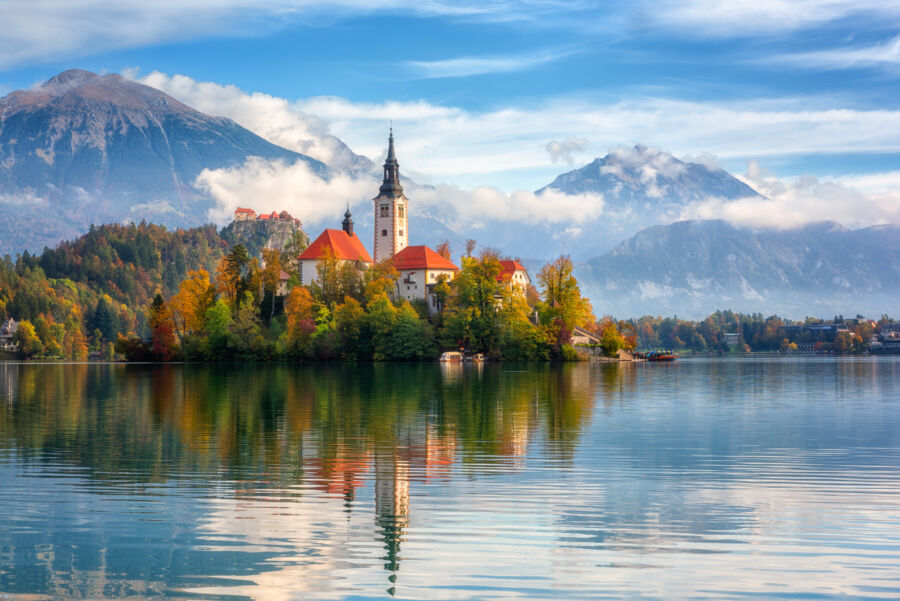
When comparing Bled and Kitzbühel, you’ll want to explore various media sources to help plan your trip. Both destinations offer stunning visuals and detailed resources that showcase their unique Alpine beauty and attractions.
Photography and Videos

Kitzbühel’s dramatic Alpine scenery has made it a photographer’s dream. The town’s iconic ski slopes, especially the legendary Streif downhill course, feature in countless videos that capture the thrill of winter sports. Many visitors share their Kitzbühel skiing experiences on platforms like YouTube and Instagram.
Professional travel photographers often capture the town’s charming medieval architecture against the backdrop of snow-capped peaks. The luxury aspect of Kitzbühel gets plenty of coverage, too, with videos showcasing its upscale hotels and that panoramic pool facing the Alps mentioned in traveler reviews.
For Bled, the iconic lake with its island church and cliff-top castle dominates visual media. The emerald waters surrounded by mountains create picture-perfect moments in any season. Time-lapse videos of sunrise over Lake Bled are particularly popular online.
Guidebooks and Articles
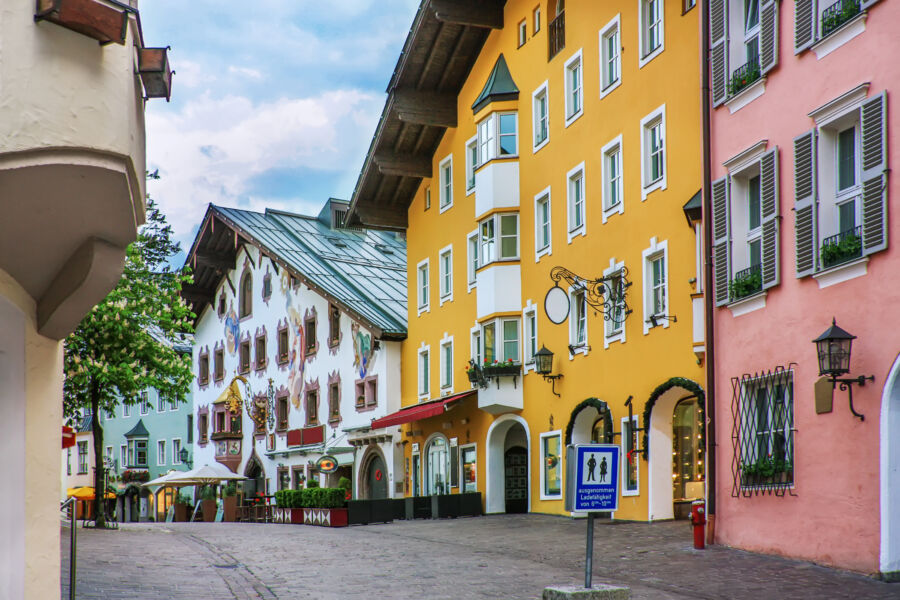
Several specialized guidebooks cover both destinations in detail. For Kitzbühel, look for publications on Alpine skiing destinations or luxury travel in Austria. Articles like “Skiing in Kitzbühel” and “Things to do in Kitzbühel if you don’t ski” provide well-rounded perspectives for both winter sports enthusiasts and non-skiers.
Travel blogs frequently feature Kitzbühel as part of Austrian Alps itineraries, with many highlighting its accessibility for novice skiers despite its reputation for challenging runs.
Bled appears in numerous Slovenia travel guides, often positioned as the country’s premier natural attraction. Articles typically focus on outdoor activities around the lake, the famous Bled Cream Cake, and day trips to nearby Triglav National Park.
Both locations have official tourism websites with downloadable brochures, trail maps, and seasonal event calendars that serve as excellent planning resources.
See Related: 3 Week Europe Trip Cost: Budget-Savvy Guide for $3000
Frequently Asked Questions
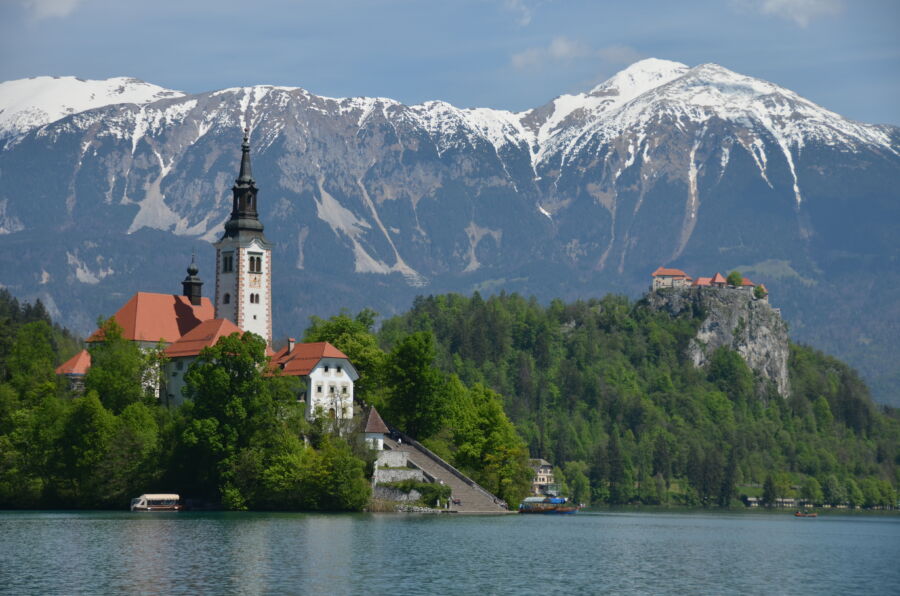
Travelers considering Bled and Kitzbühel often have specific questions about what makes each destination unique. Both locations offer distinctive experiences that go beyond their winter sports appeal.
What unique attractions do Kitzbühel and Bled offer to travelers outside of skiing?
Kitzbühel charms visitors with its medieval town center, featuring colorful buildings and cobblestone streets that date back centuries. The town hosts summer hiking trails with panoramic Alpine views and the famous Kitzbühel Tennis Trophy.
Bled showcases its iconic island church in the middle of Lake Bled, accessible by traditional wooden boats called “pletnas.” Visitors can explore Bled Castle, perched on a cliff overlooking the lake, offering spectacular views and a museum. The Vintgar Gorge, just a short distance away, provides wooden walkways along emerald waters.
How do the ski school offerings for beginners compare to those of Bled and Kitzbühel?
Kitzbühel boasts internationally certified ski schools with multilingual instructors and specialized programs for all ages. Its beginner areas feature gentle slopes for first-timers, modern magic carpets, and slow chairlifts.
Bled’s ski schools at nearby Straža slope offer a more intimate learning environment with smaller class sizes. The gentle terrain is perfect for beginners to build confidence. Many visitors travel to nearby Kranjska Gora for more extensive beginner terrain, which has excellent facilities for new skiers.
Which resort is better suited for luxury accommodations, Bled or Kitzbühel?
Kitzbühel is a luxury destination with five-star hotels like the Kitzbühel Country Club and Hotel Tennerhof. These properties feature gourmet restaurants, extensive spa facilities, and personalized concierge services. The town caters to a high-end clientele with designer boutiques and Michelin-starred dining.
Bled offers upscale accommodations like Vila Bled (former presidential residence) and Grand Hotel Toplice, but with fewer ultra-luxury options. The luxury experience in Bled focuses more on natural beauty and tranquility rather than the glitz found in Kitzbühel.
Can you detail the differences in the après-ski culture and activities in Bled and Kitzbühel?
Kitzbühel’s après-ski scene is legendary. It is centered around lively mountain huts like the Streifalm and downtown hotspots like The Londoner. The atmosphere buzzes with DJ sets, live bands, and flowing drinks until late hours. The town maintains a see-and-be-seen vibe with fashionable crowds.
Bled offers a more relaxed after-ski environment focused on wellness and relaxation. Visitors often enjoy thermal spas, lakeside dining, and quieter bars with local wines. Cultural activities like visiting Bled Castle for dinner or sampling traditional Slovenian cuisine provide authentic experiences.
What are the most challenging ski runs for expert skiers in Bled and Kitzbühel?
The infamous Streif downhill course is a feature in Kitzbühel. People consider it one of the most dangerous race tracks in the world. Expert skiers can test their skills on this legendary run outside of competition times. The Black Streif and Ehrenbachhöhe sections present steep, technical challenges with rapid elevation changes.
Bled has limited advanced terrain at Straža, but nearby resorts like Vogel and Krvavec offer challenging runs. At Krvavec, the steep “Zvoh” run challenges experts with its narrow passages and unprepared sections. These areas provide less famous but equally testing terrain for advanced skiers.
How does the overall cost of a ski holiday differ when choosing between Bled and Kitzbühel?
Kitzbühel charges premium prices across all categories. During peak season, daily ski passes cost approximately €60-70. Luxury accommodations start at €300 per night, while mid-range options rarely exceed €150. Dining and shopping reflect the resort’s upscale positioning.
In contrast, Bled offers significantly better value. Nearby ski areas charge €35-45 for daily passes. Accommodations range from €80 for quality guesthouses to €200 for luxury options. Meals, transportation, and activities typically cost 30-40% less than in Kitzbühel, making Bled an excellent choice for budget-conscious travelers.

